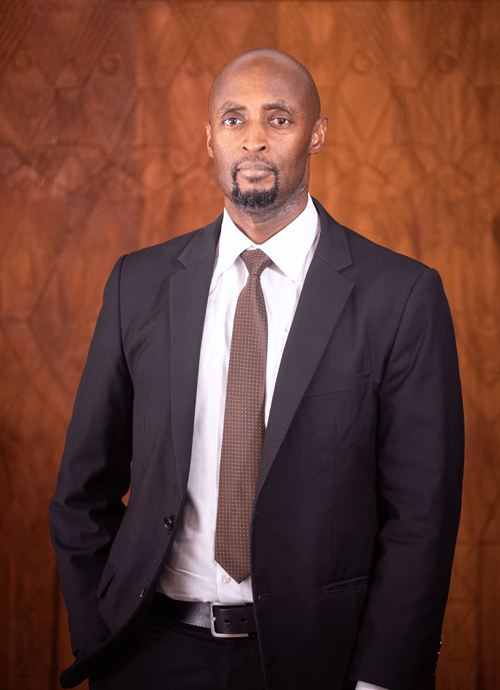OUR BUSINESS
INTRODUCTION BY OUR
HEAD OF STRATEGY
AND PERFORMANCE

Strategic targets for 2025: Achieving balance and continuous improvement
The near-term issues confront challenges related to improving our business model. We collect savings from members, invest these savings, and return the accumulated lumpsum when the member qualifies. To achieve this effectively, we employ people, and we use process-driven physical and electronic channels. To manage these resources, we incur costs. This balancing act is expressed quantitatively as 95:1:95:20 – our strategic target for 2025. Specifically, we aim to achieve a staff engagement rating of 95%, which will help us optimise our processes to a point where we can pay a member’s claim within 1 day. This positive experience will engender more customers to the Fund. We expect to achieve a customer satisfaction rate of 95% and drive the achievement of total assets to UGX 20Tn by 2025.
This is our strategy story; continuous improvement every day, using the balanced scorecard as an integral part of the sustainability agenda of the Fund.
Ensuring a relevant business model
But this is not sufficient in a fast-changing world. We continually question what trends we must be mindful of that could render the Fund irrelevant within the next 10 years? Businesses are evolving into full-time digital platforms at such a rate that brick-and-mortar is fast becoming an addition-to, rather than the main means of serving the customer. The majority of Uganda’s population, around 78%, is below the age of 30 years. Most of these people are likely to be found in the informal economy, and unlikely to engage with the traditional business model. The Unemployment Rate* in Uganda is 4.28% and to this end, more people are turning to entrepreneurship as a mainstream source of livelihood. The entrepreneurs who are attuned to these trends will be winners in the coming decade.
Creating sustainable businesses
Our sustainability agenda therefore must protect the Fund against disruption from technology, customer, and regulatory trends.
Our innovation programme is a complementary arm of our sustainability objective – crowd-sourcing problems, testing them quickly, and working with strategic partners to get them to scale.
So far, one major initiative has matured through this process – The Hi-Innovator.
It is a partnership with the Mastercard Foundation to identify, support, and scale promising start-ups – in the process creating sustainable businesses, jobs, and (most importantly) new members for the Fund.
Striving for sustained excellence: Navigating today and anticipating tomorrow
Sustainability must recognise the important things a business must do today to keep delivering value, while also looking at the emerging problems of tomorrow. These twin goals are difficult to synthesise and require disciplined approaches to validate and scale new propositions. To embed discipline in this process, the Fund established a Results Management Office (RMO) whose responsibility is to inculcate best practices in project and change management to maximise the benefits realised from our strategic initiatives.
In summary, we aim to adopt a sustainable business strategy – incorporating environmental, and social factors into the Fund’s policies, practices, and processes to create long-term benefits for our members, society, and our people - Shared Value!!
*UBOS – Uganda Bureau of Statistics – December 2022
